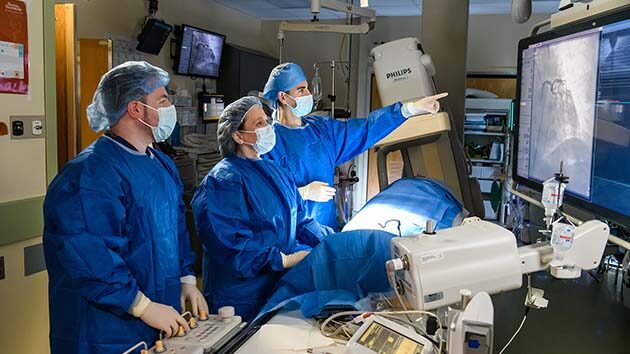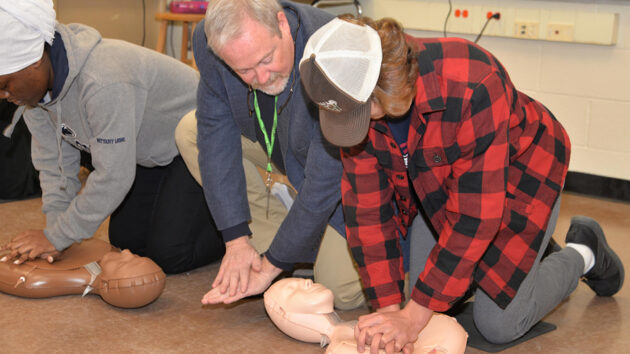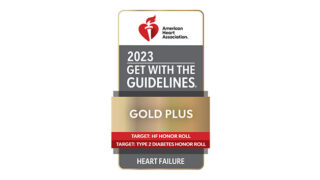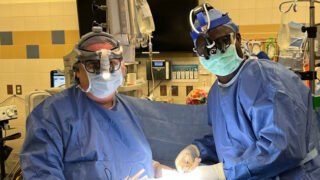Cardiology
The Most Advanced Heart Care
From the most complex lifesaving cardiac procedures to routine heart care, the Albany Med Health System provides complete care for all patients with conditions affecting the heart. We make sure patients receive the latest and most advanced diagnostics and treatments.
Patients can receive heart care from our physicians at Albany Medical Center, Columbia Memorial Health, Glens Falls Hospital, and Saratoga Hospital, with the option to transfer patients in need of more advanced or critical care to Albany Medical Center.
All Albany Med Health System physicians and locations can be found in the Get Care section of this page.
- Cardiac arrest
- Heart attack
- Heart failure
- Structural heart problems
- Heart defects
- Heart disease
- Heart disease prevention
- Congenital heart disease
- Heart valve disorders
- Cardiac consultations
- Inpatient and outpatient cardiac treatment
- Cardiac catheterization
- Emergency cardiac catheterization
- Electrophysiology & ablation
- Cardiac catheterization
- Cardiac rehabilitation
- Congestive heart failure care and treatment
- Nuclear cardiology
- Echocardiograms
- Stress echocardiograms
- Transesophageal Echo Testing
- Pacemaker/defibrillator insertion and management
- Holter Monitor/30-Day Event Monitor
- Exercise stress testing
- Coumadin management
- Cardiac rehabilitation
Structural Heart Program at Albany Medical Center
Our Structural Heart Program provides innovative care for patients with complex valvular and structural heart disease. We also offer the latest minimally invasive treatments for patients, including those who do not qualify for open-heart procedures.
Our team collaborates to develop a treatment plan tailored to each patient. We provide patients with informed and effective care.
Some of the most common structural heart treatments we offer include:
- Atrial septal defect transcatheter repair
- Balloon valvuloplasty
- Left atrial appendage closure (LAAC) with the Watchman Device
- Transcatheter aortic valve replacement (TAVR)
TAVR is for patients with severe aortic stenosis who are ineligible due to age or other medical conditions for open-heart aortic valve replacement. This minimally invasive procedure involves delivering a collapsible artificial valve into the heart using a catheter inserted through a small incision in an artery of the leg or in the chest. The artificial valve is expanded inside the diseased valve by inflating a balloon and almost immediately goes to work. - Minimally invasive and traditional heart valve repair and replacement
Heart Arrhythmias
Our team of cardiac electrophysiologists located at Albany Medical Center and Glens Falls Hospital treat conditions that cause the heart to beat too fast, too slow, or in an irregular pattern. We use the latest innovative technology and testing to measure the electrical activity of the heart, thus finding the location and cause of heart problems for patients.
- Arrhythmia
An arrhythmia is an irregular heartbeat caused by conditions like coronary artery disease or an injury from heart attack. Common types of arrhythmias include atrial fibrillation, atrial flutter, and ventricular fibrillation. Patients with cardiac arrhythmias often do not need treatment at all. For cases that do require intervention, treatments can include medication, ablation at the source of the arrhythmia, pacemaker implantation, or an implantable cardioverter defibrillator. - Atrial fibrillation ablation
Atrial fibrillation is the most common type of arrhythmia. Although not life-threatening, it can cause uncomfortable symptoms and contribute to heart failure and stroke. Treatments range from medication to minimally invasive surgical procedures. Cardioversion can also be used to treat atrial fibrillation if the patient is diagnosed within 24-48 hours of the onset of symptoms. Ablation gets rid of abnormal, arrhythmia-causing areas of the heart. - Atrial flutter
Atrial flutter is an abnormally fast heartbeat. Atrial flutter is not generally life threatening but may increase the risk of developing blood clots and stroke. There are a variety of treatment options, including medication therapy, blood thinners, and ablation - Bradycardia
Bradycardia is an unusually slow heart rate. Bradycardia can become a medical emergency when there is a complete heart blockage, which can result in sudden cardiac arrest. It is important to diagnose symptoms to prevent this kind of medical emergency. If treatment is required, options include altering medications that may slow your heart rate or using medications that temporarily increase your heart rate or implanting a pacemaker. - Catheter ablation
Another treatment option for atrial fibrillation is catheter ablation. This minimally invasive procedure is used to get rid of the tiny areas of the heart that create the abnormal electrical impulses that cause the atrial fibrillation. - Pacemakers and defibrillators
Pacemakers and defibrillators are used to correct severe arrhythmias and to prevent sudden cardiac death. Pacemakers can be used to treat patients with abnormally slow heart rates. They take over the role of the heart’s natural pacemaker when correction is needed. Implantable cardioventricular defibrillators are used to treat life-threatening arrhythmias. - Supraventricular arrhythmia
Supraventricular arrhythmias are abnormal heartbeats that originate in the atria (the heart’s upper two chambers). - Ventricular fibrillation
Ventricular fibrillation occurs when the lower two chambers of the heart shutter due to disorganized electrical impulses in the ventricles. This condition is considered a medical emergency and can be fatal without treatment. Ventricular fibrillation should be treated as soon as possible by way of CPR and defibrillation to restore the normal rhythm of the heart.
Cath Labs
Our cath labs give physicians the ultimate view of the heart, both for diagnosing heart function and for clearing blockages. The labs located at Albany Medical Center also provide the region’s only pediatric catheterization program.
Emergency Care
Cath lab teams can be mobilized within 30 minutes to treat patients in emergency situations.
Getting You Back on Your Feet
A patient may undergo a catheterization to diagnose and treat a condition and be discharged that same day.
Heart Failure
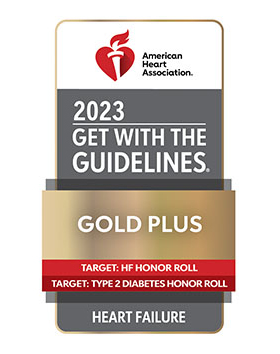
Our team of heart specialists, electrophysiologists, cardiac interventionalists, and surgeons work together to diagnose and treat the specific cause of heart failure.
About six million adults are living with heart failure in the United States, a number that is expected to increase to more than eight million by 2030. Despite the name, heart failure doesn’t mean that the heart has stopped working — it means the heart is having a hard time pumping blood and oxygen throughout the body. While there’s no cure for heart failure, patients can live a quality life by working with their health care team to create and stick with a plan that may include medication, symptom monitoring and lifestyle changes.
Albany Medical Center is a recipient of the American Heart Association’s Get With The Guidelines - Heart Failure Gold Plus quality achievement award for its commitment to improving outcomes for patients with heart failure.
Leading the Way
The Albany Med Health System successfully implanted the world’s first FDA-approved heart failure device designed to treat patients who have had little to no success with other proven treatment options. Barostim Baroreflex Activation Therapy consists of an implanted device that uses electrical pulses to stimulate the heart’s blood pressure sensors through an electrode that lies on the patient's carotid artery in the neck. The electrical impulses that are sent from the neuromodulation device inform the brain of the heart's condition, enabling the brain to improve the function of the heart by relaxing the blood vessels, thereby slowing the heart rate. Over time, the heart will regain strength, lessening the symptoms of heart failure, enabling patients to return to normal activity.
Preventing heart disease starts with healthy lifestyle choices.
Know Your Numbers. High cholesterol is one of the major controllable risk factors for coronary heart disease, heart attack, and stroke. It’s important to get tested to understand where your cholesterol numbers are.
Choose Healthy Eating. The food you eat can decrease your risk of heart disease and stroke. Choose foods low in saturated fat, trans fat, and sodium. As part of a healthy diet, eat plenty of fruits and vegetables, fiber-rich whole grains, fish (preferably oily fish - at least twice per week), nuts, legumes and seeds, and eat some meals without meat.
Be Physically Active. You can slowly work up to at least 150 minutes of moderate-intensity aerobic physical activity (e.g., brisk walking) every week or 75 minutes of vigorous intensity aerobic physical activity or a combination of both every week.
Don’t Smoke. Smoking lowers good cholesterol. Worse still, when a person with unhealthy cholesterol levels also smokes, the risk of coronary heart disease increases. Smoking also compounds the risk presented by other risk factors for heart disease, such as high blood pressure and diabetes.
Don’t Wait To Get Screened. Risk factors and heart disease prevention measures vary as you age. While it’s always important to stay physically active, eat healthy, and avoid smoking, the different stages of life present other areas of concern that should be considered. If you have a history of heart disease in your family, be proactive and contact an Albany Med Health System heart specialist who can help determine the best course of care for you.
Awareness, Education & Research
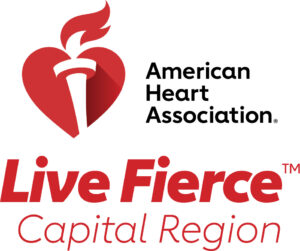 The Albany Med Health System is proud to offer ongoing education to help patients lower their risk factors and make healthy lifestyle choices. We collaborate with the American Heart Association (AHA) to improve the heart health of our community.
The Albany Med Health System is proud to offer ongoing education to help patients lower their risk factors and make healthy lifestyle choices. We collaborate with the American Heart Association (AHA) to improve the heart health of our community.
Training the Next Generation of Physicians
Learn more about our Cardiology Fellowship Program and our Cardiothoracic Surgery Fellowship Program at Albany Medical College.
More Services
Learn more about women's heart health and vascular surgery.
